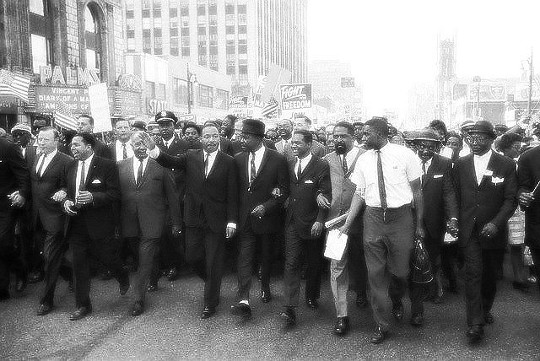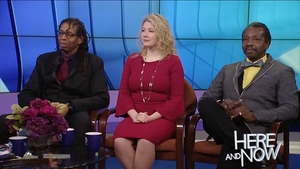 |
 |
Tickets
will be on sale soon |
RETURN
ENGAGEMENT
November
7 to 24, 2019
Theater for the New City, 155 First Ave.
(at E. 10th Street), NYC 10003
Presented by Theater for the New City
Thursdays through Saturdays at 8:00 PM,
Sundays at 3:00 PM
$20
Recommended for ages 10 and up.
(212) 254-1109
Running time: 1:40.
Click here to listen to selections from the score.
"Bring it On" meets "Dreamgirls" in the girl-group musical, "Betty and the Belrays" by William Electric Black aka Ian Ellis James, which will be presented by Theater for the New City in a return engagement November 7 to 24, 2019.
The piece tells the story of three white female singers from Detroit who struggle to change a racially divided society by singing for a black record label. Book and lyrics are by William Electric Black. Music is by Black, Valerie Ghent (arranger/keyboards for Ashford & Simpson) and Gary Schreiner. Choreography is by Jeremy Lardieri. Director is Mr. Black.
| BETTY & THE BELRAYS (in mirror, L-R): Kalia Lay, Alex Welch, Paulina Breeze. |
Girl groups are now an iconic part of the history of the recording industry in America. In a brief, shining period between the payola scandal and the British invasion, American girl groups swamped the charts with songs that are now classic: mostly sweet harmonies on sentimental themes, with classic melody constructions and simplistic love lyrics.
Partially because of the concern that America's teens would like the songs better if they didn't know the singers' color, many girl groups were anonymous except for their recordings. Almost all of them were black, but that was not known to many fans at the time. "Betty & The Belrays" asks, "what would have happened if a white girl group had actually tried to recapitulate the careers of these black groups?"
If you love the songs of The Chiffons, The Crystals, The Shirelles and The Ronettes, you'll find heaven in this production, whose music recaptures the innovation and fresh, optimistic buoyancy that ruled the AM airwaves in the Kennedy era. It features a live onstage Motown-style band led by Gary Schreiner, authentic '60s choreography, and a cast of fourteen. It is recommended for audiences aged ten and up.
 |
DETROIT
MARCH TO FREEDOM, 1963. Photo by Andrew McFarlane. |
The musical is a fable that shows how integral this music was to the Civil Rights Movement. The setting of the play--1963 Detroit--is where the Movement and Motown found musical harmony. Martin Luther King, you may remember, led Detroit's Walk to Freedom, America's largest civil rights demonstration at the time, on June 23, 1963. His address to the crowd there was an early version of the "I Have a Dream" speech he offered two months later at the March on Washington.
Detroit was also the place where in 1959, Berry Gordy founded Motown Records in three adjoining row houses (before moving it to L.A. in 1967). One Motown group that broke big in 1963 was Martha & The Vandellas. Their "Dancing in the Streets" (1964) is believe by many to be actually about protest.
| THE LOVEJOYS, Betty's artistic idols, autograph records. Left: Alexis Miles, Christen Dekie, Kennedy Jazz. Right: Brenna Sheridan, Lydia Stinson. |
It's against this auspicious backdrop that the play takes place. Betty Belarosky, the daughter of a Ford assembly line worker and a department store daisy, ventures naively into the music business, wanting to sing the chirpy heartthrob harmonies of her time. She forms an all white girl group, a la the Ronnettes, and aims for a record deal at Soltown--a black record company. Her collaborators are one lovesick femme fatale and one "tough girl" type.
Betty meets Sam the Beat, a local black deejay, who advises that the only thing that crosses the color line is music. He refers the trio to Miss Loretta Jones, an Aretha Franklin-type singer. She teaches them soul through immersion, first by experiencing the music of black churches, and then by sampling black women's professional life: ironing for three days straight, to understand the life confinement of black cooks, seamstresses and launderesses.
LEARNING
SOUL BY IMMERSION -- L-R: Paulina Breeze, Aigner Mizzelle, Kalia
Lay, Alex Welch. |
This gives birth to unusual songs with underlying themes of social protest, including "Why Oh Why Must We Do the Segregation" and "My Boyfriend is a Negro." The more their music incorporates Miss Loretta's teachings, the higher their records climb on the charts. Their growing popularity makes it seem that the girls could actually bring their segregated city together through their music. They now actually overshadow their artistic idols, a local black girl group named The Lovejones.
After an appearance on a popular television show, Betty & The Belrays are offered a major record deal from a white label on the condition that they stop singing about racial issues. When they return home, the girls are faced with hate mail and bricks through their windows. The question facing them becomes: resist the hate or sell out?
Betty decides that one of the bricks that came through her window must have knocked some sense into her head. Defiantly, she joins SNCC (Southern Christian Leadership Conference) and travels to campaign in the South, where she shares the fate of the Freedom Riders who died in Mississippi in 1964.
| DRESSING ROOM WISDOM-- The leader of The Lovejoys instructs Betty on how to make it as a girl group. Alexis Myles and Paulina Breeze. |
William Electric Black weaves comedy throughout his treatment of sensitive racial issues, but you could be misled by the musical's playful tone. The production forthrightly addresses the question of cultural identification with music. There are 13 original songs, varying in style from The Ronettes to The Vandellas, that take us to the heart of the issues facing the recording industry at the time. Betty and her collaborators evolve into, essentially, a white group with a Motown attitude.
The playwright calls attention to the importance of black music in our culture by honoring the imitation that was its sincerest form of flattery. He also shows off the risks that white performers took in embracing black musical traditions and the civil rights movement.
| Betty Belarosky (Pauline Breeze) wins tickets from a local radio DJ (Levern Williams) to see a Black girl group show. | Betty and her parents, L-R: Gretchen Poole, Paulina Breeze, John Hersey. |
William Electric Black introduced the musical in a Theater for the New City production in 2007, but has extensively rewritten it since then. His new version introduces the pathos of Betty's sacrifice in order to claim that while we have seen gains in equal opportunity and civil rights, the idea of sacrifice is something we seem to have lost.
He also intends to illustrate how this type of music and the civil rights movement evolved symbiotically. He muses, "In recent years, although we've had a black president, segregation took on different forms and so did the music. As barriers got absorbed and changed--we thought it was for the better--really it was for the worse. Is today's music better (think of hip-hop), or have we really forgotten what it was originally about? Is the message lost?" He notes that if anything crossed the color line historically, it was the girl groups. The Supremes, Toys and Ronettes brought teens together and these teens went south to march and sometimes, to die. He urges us to revisit this time again. "We need to go back to the music scene and how it united teens," he says.
The score is actually light-hearted like "Hairspray" and "Dreamgirls." Most of the melodies are by Valerie Ghent and some are by Gary Shreiner.Read this informative primer on girl groups in rock music written by Chuck Mallory.
All photos by Jonathan Slaff
 |
Hear selections
from our score: |
 |
 |
 |
 |
 |
 |
 |
 |